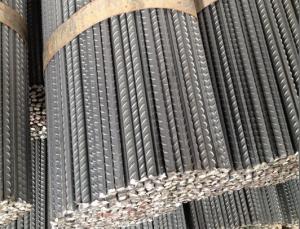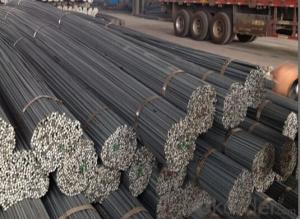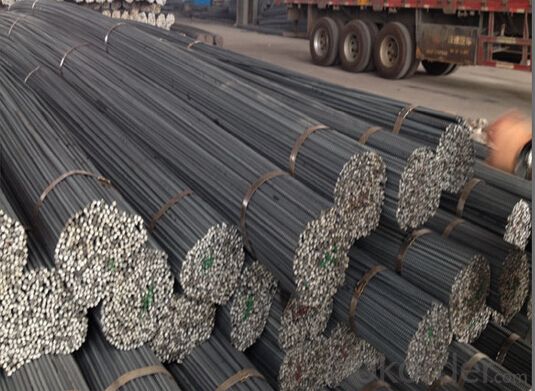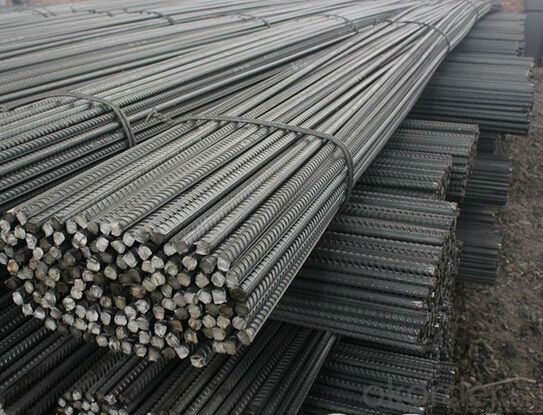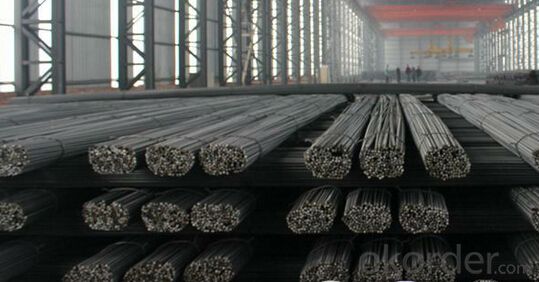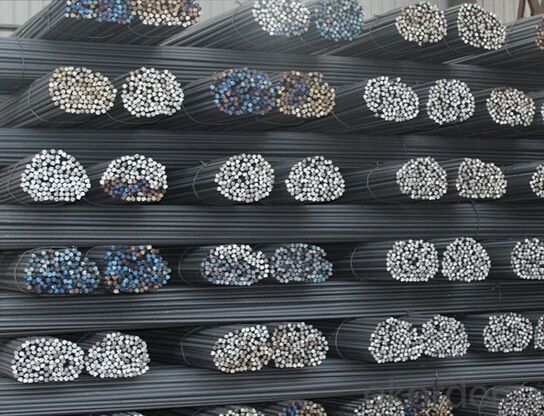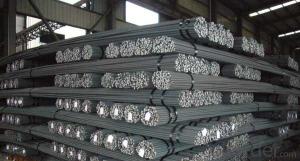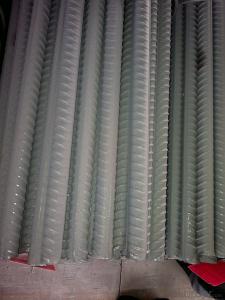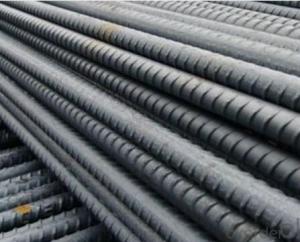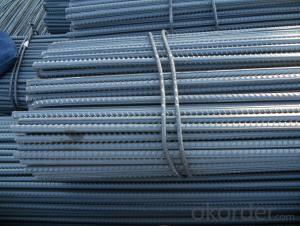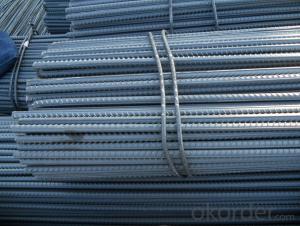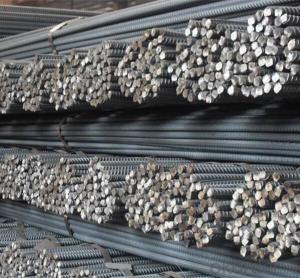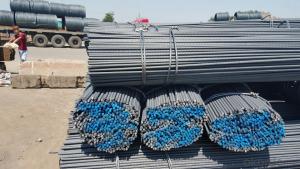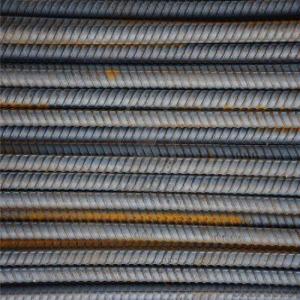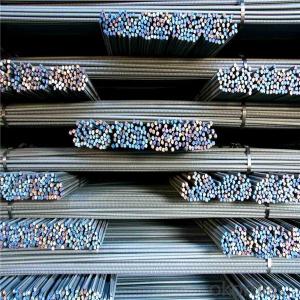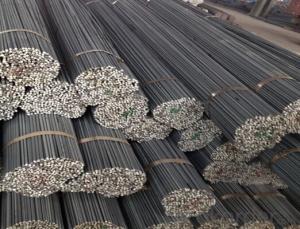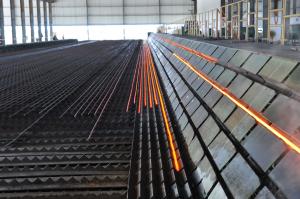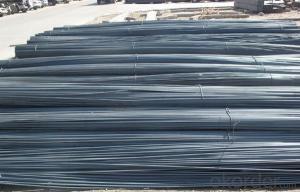ASTM A615 Gr 60 8mm 10mm 12mm High Quality Steel Rebar
- Loading Port:
- Tianjin
- Payment Terms:
- TT OR LC
- Min Order Qty:
- 100 m.t.
- Supply Capability:
- 10000 m.t./month
OKorder Service Pledge
Quality Product, Order Online Tracking, Timely Delivery
OKorder Financial Service
Credit Rating, Credit Services, Credit Purchasing
You Might Also Like
Specification
Standard:
AISI,ASTM,JIS,GB,BS,DIN,API,EN
Technique:
Hot Rolled,Cold Rolled,Cold Drawn,ERW,Forged,Saw,Extruded,EFW,Spring
Shape:
U Channel,Square,C Channel,Hexagonal,Round,Rectangular,Oval,LTZ
Surface Treatment:
Galvanized,Coated,Copper Coated,Color Coated,Oiled,Dry,Chromed Passivation,Polished,Bright,Black,PVDF Coated
Steel Grade:
Q195,Q215,Q235,Q215B,Q235B,RHB335,HRB400,200 Series,300 Series,400 Series,600 Series,SS400-SS490,10#,20#,A53(A,B)
Certification:
ISO,SGS,BV,IBR,RoHS,CE,API,BSI,UL
Thickness:
6-34mm
Width:
6-34mm
Length:
12m
Outer Diameter:
6-34mm
Net Weight:
10kg
Packaging:
seaworthy packaging
ASTM A615 Gr 60 8mm 10mm 12mm High Quality Steel Rebar
Details of the ASTM A615 Gr 60 8mm 10mm 12mm High Quality Steel Rebar
| Standard & Grade: | GB1499-98 : HRB335,HRB400,HRB500 |
| BS4449-1997 : GR460,GR500 | |
| CAN/CSA-G30.18-M92 : 400W | |
| ASTM A615 : Gr.40, Gr.60 | |
| Diameter: | 6mm;8mm;10mm;12mm;14mm;16mm;18mm;20mm;22mm;25mm;28mm;30mm;32mm;35mm;40mm |
| Length: | 6m,9m,12m |
| Packing: | Bundle packing |
| Origin: | China |
| Application: | Construction,Road,Machinery processing,Welding fields. |
| Delivery time: | 10-25 days |
| Shipment: | By bulk vessel or Container |
| Documents: | Mill Test Certificate,Commercial Invoice,Packing List,Certificate of Origin |
Company Introduction of the ASTM A615 Gr 60 8mm 10mm 12mm High Quality Steel Rebar
CNBM International Corporation is the most import and export platform of CNBM group(China National Building Material Group Corporation) ,which is a state-owned enterprise, ranked in 270th of Fortune Global 500 in 2015.
With its advantages, CNBM International are mainly concentrate on Cement, Glass, Iron and Steel, Ceramics industries and devotes herself for supplying high quality series of refractories as well as technical consultancies and logistics solution.

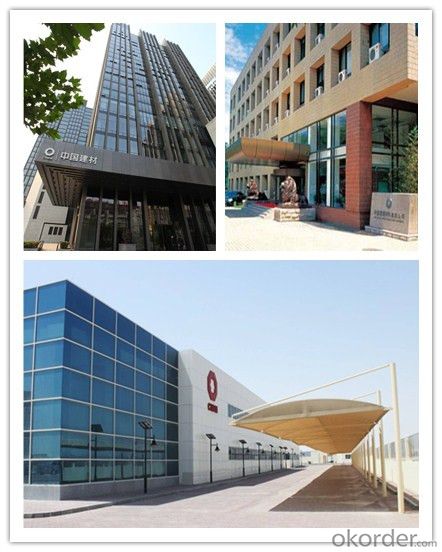
Packaging & Delivery of the ASTM A615 Gr 60 8mm 10mm 12mm High Quality Steel Rebar
| Packaging Detail | Sea worthy packing /as per customer's packing instruction |
| Delivery Detail | 15 ~ 40 days after receiving the deposit |
FAQ
| Are you a trading company or manufacturer? | Manufacturer |
| What’s the MOQ? | 1000m2 |
| What’s your delivery time? | 15-20 days after downpayment received |
| Do you Accept OEM service? | Yes |
| what’s your delivery terms? | FOB/CFR/CIF |
| What's the Payment Terms? | 30% as deposit,70% before shipment by T/T |
| Western Union acceptable for small amount. | |
| L/C acceptable for large amount. | |
| Scrow ,Paybal,Alipay are also ok | |
| Why choose us? | Chose happens because of quality, then price, We can give you both. Additionally, we can also offer professional products inquiry, products knowledge train (for agents), smooth goods delivery, excellent customer solution proposals. |
| What's your available port of Shipment? | Main Port, China |
| What’s your featured services? | Our service formula: good quality+ good price+ good service=customer's trust |
| Where are your Market? | Covering more than 160 countries in the world |
- Q: Can steel rebars be used in cold weather conditions?
- Yes, steel rebars can be used in cold weather conditions. Steel is known for its durability and strength, making it a suitable material for construction projects even in cold climates. However, it is important to take certain precautions when using steel rebars in cold weather. For instance, the rebars should be properly stored and protected from moisture to prevent rusting. Additionally, the concrete mix used with the rebars should be adjusted to ensure it can withstand freezing temperatures and avoid cracking. Overall, with proper planning and precautions, steel rebars can be effectively used in cold weather conditions.
- Q: Can steel rebars be used in structures with heavy snow loads?
- Yes, steel rebars can be used in structures with heavy snow loads. Steel rebars provide strength and reinforcement to concrete structures, which helps them withstand heavy loads, including the weight of snow. Additionally, steel rebars have high tensile strength and can resist bending and deformation caused by snow loads, making them suitable for such structures.
- Q: What are the different types of surface finishes available for steel rebars?
- There are several different types of surface finishes available for steel rebars, each with its own unique characteristics and advantages. Here are some of the most common types: 1. Black/Uncoated Finish: This is the most basic type of surface finish for steel rebars. It involves leaving the rebar in its natural state without any additional coating or treatment. While it provides no corrosion protection, it is often used in applications where the rebar will be encased in concrete. 2. Epoxy-Coated Finish: In this type of finish, a layer of epoxy coating is applied to the surface of the rebar. This coating provides excellent corrosion resistance and helps to extend the lifespan of the rebar. Epoxy-coated rebars are commonly used in marine environments or in structures exposed to harsh weather conditions. 3. Galvanized Finish: Galvanizing involves applying a layer of zinc coating to the surface of the rebar. This coating acts as a barrier against corrosion and provides long-lasting protection. Galvanized rebars are commonly used in areas with high moisture content or in structures exposed to corrosive chemicals. 4. Stainless Steel Finish: Stainless steel rebars are made from a corrosion-resistant alloy that contains a high percentage of chromium. This type of finish is highly resistant to corrosion, even in harsh environments. Stainless steel rebars are typically used in structures where long-term durability is essential, such as in bridges and parking garages. 5. Ribbed Finish: Ribbing refers to the pattern or texture that is added to the surface of the rebar. This type of finish improves the bond strength between the rebar and the surrounding concrete, enhancing the structural integrity of the construction. Ribbed finishes are commonly used in reinforced concrete structures. It is important to consider the specific requirements of your project when selecting a surface finish for steel rebars. Factors such as environmental conditions, exposure to moisture or chemicals, and the desired lifespan of the structure will all influence the choice of surface finish. Consulting with a structural engineer or construction professional can help determine the most suitable finish for your particular application.
- Q: What is the process of anchoring steel rebars in concrete?
- To establish a sturdy and secure connection between steel rebars and concrete, a series of steps must be taken. Initially, the concrete surface where the rebars will be anchored must be adequately prepared. This typically entails cleansing the surface to eliminate any dirt, dust, or debris that could hinder the bonding process. It is also imperative to confirm that the concrete has fully cured and attained the required strength before proceeding. Subsequently, the rebars are cut to the desired length and shape as per the construction plans. Adhering to the specified dimensions and placement requirements is essential to guarantee proper reinforcement and structural integrity. Once the rebars are prepared, they are typically positioned in the desired location within the concrete formwork. The rebars need to be placed at the correct depth and spacing as outlined in the design. This is commonly achieved by employing plastic or metal chairs, spacers, or tie wire to hold the rebars firmly in place. Once the rebars are appropriately positioned, the next step involves fastening them to the concrete. One prevalent method of anchoring the rebars is by utilizing mechanical anchors or rebar couplers. These devices are designed to establish a strong connection between the rebars and the concrete through various mechanisms such as threading, crimping, or expansion. Alternatively, another technique for anchoring the rebars involves using adhesive or cementitious grouts. These substances are applied to the rebars and then inserted into pre-drilled holes in the concrete. The adhesive or grout aids in bonding the rebars to the concrete and provides additional reinforcement. Finally, after the rebars are anchored, the concrete is poured or placed around them. To ensure complete encapsulation of the rebars, the concrete must be consolidated effectively. This can be achieved by implementing techniques such as vibrating the concrete or employing specialized equipment. In conclusion, anchoring steel rebars in concrete necessitates meticulous planning, preparation, and execution to establish a dependable and long-lasting bond. Adhering to industry standards and design specifications is vital to achieve the desired structural strength and integrity.
- Q: What are the benefits of using stainless steel rebars?
- There are several benefits of using stainless steel rebars in construction projects. Firstly, stainless steel rebars offer excellent corrosion resistance. This is particularly important in environments with high humidity, coastal areas, or projects where the concrete will be exposed to water or chemicals. Unlike traditional carbon steel rebars, stainless steel rebars do not rust or corrode easily, ensuring the long-term integrity and durability of the structure. Secondly, stainless steel rebars have a higher tensile strength compared to carbon steel rebars. This means that they can withstand greater forces and stresses without deforming or breaking. This makes stainless steel rebars ideal for structures that require high load-bearing capacity, such as bridges, parking garages, and high-rise buildings. Furthermore, stainless steel rebars have a low thermal expansion coefficient. This means that they do not expand or contract significantly with changes in temperature. This property helps to minimize cracking and structural damage due to thermal stresses, ensuring the longevity and stability of the concrete structure. In addition to their mechanical properties, stainless steel rebars are also aesthetically pleasing. With their sleek and shiny appearance, stainless steel rebars can enhance the visual appeal of architectural elements such as exposed concrete walls or features in bridges and buildings. Lastly, stainless steel rebars are environmentally friendly. They are 100% recyclable, making them a sustainable choice for construction projects. By using stainless steel rebars, builders and engineers can contribute to reducing the carbon footprint and promoting a greener construction industry. Overall, the benefits of using stainless steel rebars include superior corrosion resistance, high tensile strength, low thermal expansion, aesthetic appeal, and environmental sustainability. These advantages make stainless steel rebars a preferred choice for various construction applications, providing long-lasting and reliable reinforcement for concrete structures.
- Q: What are the different methods for cutting steel rebars on-site?
- There are several methods for cutting steel rebars on-site, including the use of a manual rebar cutter, a portable electric rebar cutter, a hydraulic rebar cutter, or a gas-powered rebar cutter. Each method has its advantages and limitations, depending on the specific requirements of the project.
- Q: Can steel rebars be used in structures with high chemical exposure?
- No, steel rebars should not be used in structures with high chemical exposure as they can corrode and weaken over time, compromising the structural integrity of the building.
- Q: Are steel rebars subject to any international standards or regulations?
- Yes, steel rebars are subject to international standards and regulations. The most widely recognized international standard for steel rebars is the ISO 6935-2 standard, which sets requirements for the chemical composition, mechanical properties, and dimensions of rebars. Additionally, various countries have their own national standards and regulations that ensure the quality and safety of steel rebars used in construction projects.
- Q: What is the role of steel rebars in ensuring occupant safety?
- Various structures, particularly buildings and infrastructure, rely on steel rebars to ensure occupant safety. These reinforced steel bars are commonly used in concrete construction to strengthen and prolong the lifespan of the structure. Ultimately, this safeguards the individuals residing or working within these structures. Steel rebars have a primary function of providing structural reinforcement to concrete elements like columns, beams, and slabs. By incorporating rebars into the concrete, the overall load-bearing capacity of the structure is greatly increased. This allows it to endure external forces and loads, significantly reducing the risk of collapse or structural failure that could harm the occupants. During seismic events, such as earthquakes, steel rebars play a crucial role in dissipating and distributing the energy exerted on the structure. The ductility and tensile strength of steel enable it to absorb and distribute seismic forces, minimizing the chances of a sudden structural failure. Consequently, occupants are protected from potential hazards associated with seismic activity. Additionally, steel rebars enhance the fire resistance of concrete structures. While concrete itself possesses good fire-resistant properties, the inclusion of steel rebars further strengthens this resistance. Steel has a high melting point and low thermal conductivity compared to other materials. This means that steel rebars can withstand high temperatures for an extended period, ensuring the building's structural integrity during a fire and providing occupants with a safe evacuation route. Furthermore, steel rebars contribute to the long-term durability and maintenance of the structure. They prevent cracks and minimize the effects of corrosion, maintaining the concrete's structural integrity over time. This ensures that occupants are not exposed to potential hazards caused by structural deterioration. In summary, the role of steel rebars in ensuring occupant safety is essential. They provide structural reinforcement, increase load-bearing capacity, enhance fire resistance, and contribute to the long-term durability of a structure. By incorporating steel rebars into concrete construction, the risk of collapse, structural failure, and other potential hazards is significantly reduced, ultimately creating a safe environment for occupants.
- Q: What is a steel rebar?
- A steel rebar is a reinforcing bar made of steel that is used to provide strength and stability to concrete structures. It is commonly used in construction projects such as buildings, bridges, and highways to reinforce and support the concrete, thereby increasing its durability and load-bearing capacity.
Send your message to us
ASTM A615 Gr 60 8mm 10mm 12mm High Quality Steel Rebar
- Loading Port:
- Tianjin
- Payment Terms:
- TT OR LC
- Min Order Qty:
- 100 m.t.
- Supply Capability:
- 10000 m.t./month
OKorder Service Pledge
Quality Product, Order Online Tracking, Timely Delivery
OKorder Financial Service
Credit Rating, Credit Services, Credit Purchasing
Similar products
Hot products
Hot Searches
Related keywords
